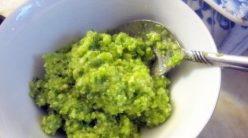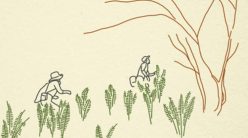It’s only February but we’re impatiently waiting to start foraging wild foods again.
This time of year, when there’s still snow blanketing our Minnesota landscape, I’m already making mental lists of what wild edible foods will be emerging soon and what we want to look for.
Here are our favorite wild foods that we forage in our family in early spring.
Maple and Walnut Sap
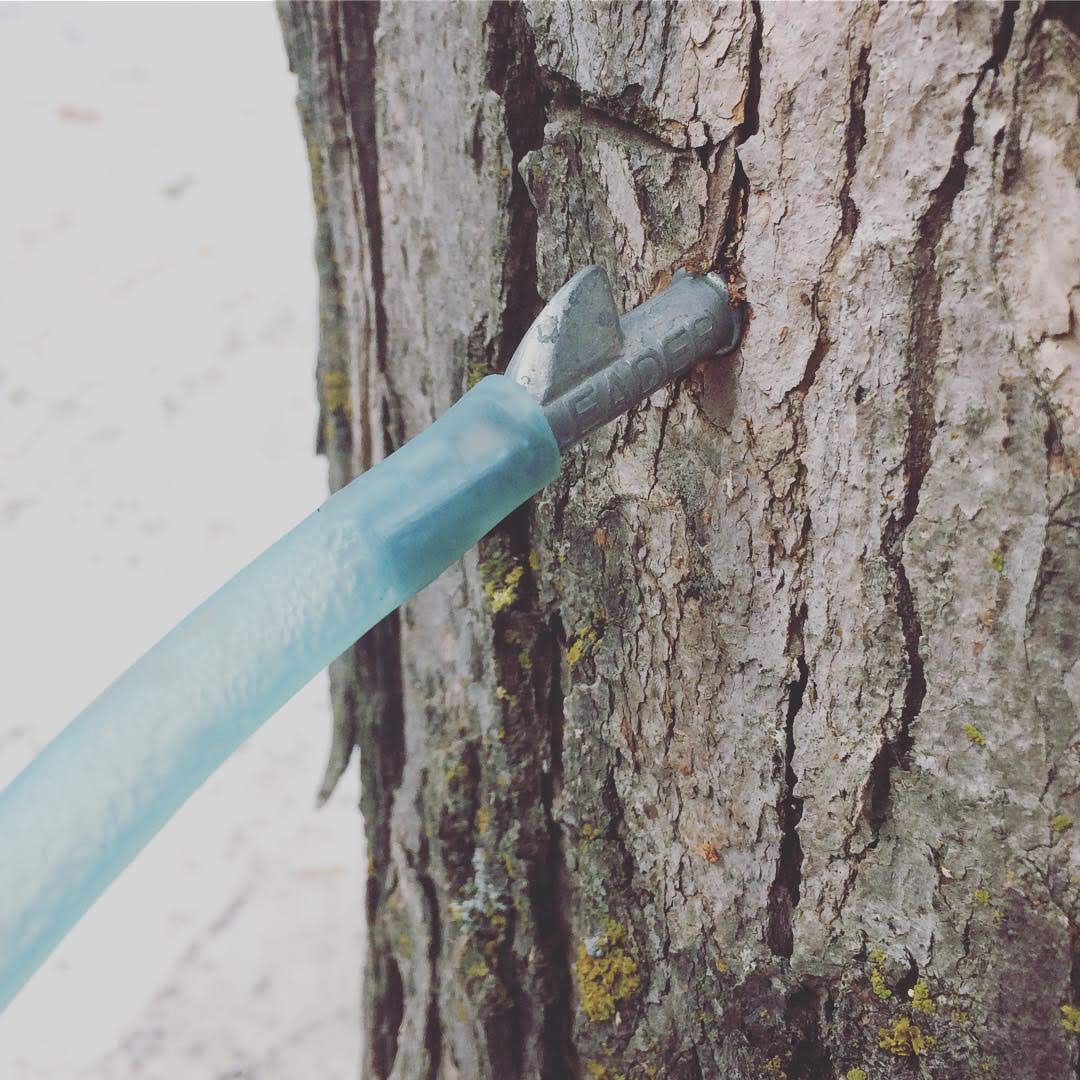
We tap our backyard maple tree and our daughter Rhia’s maple and walnut tree. We don’t get a lot from just three trees, but we get enough for a few pints of maple and walnut syrup, plus fresh drinking. Yes, we drink the sap! It tastes like really amazing, very slightly sweet water, and it’s loaded with minerals and nutrients. You can even buy it canned for ridiculously high prices. 🙂
Ramps
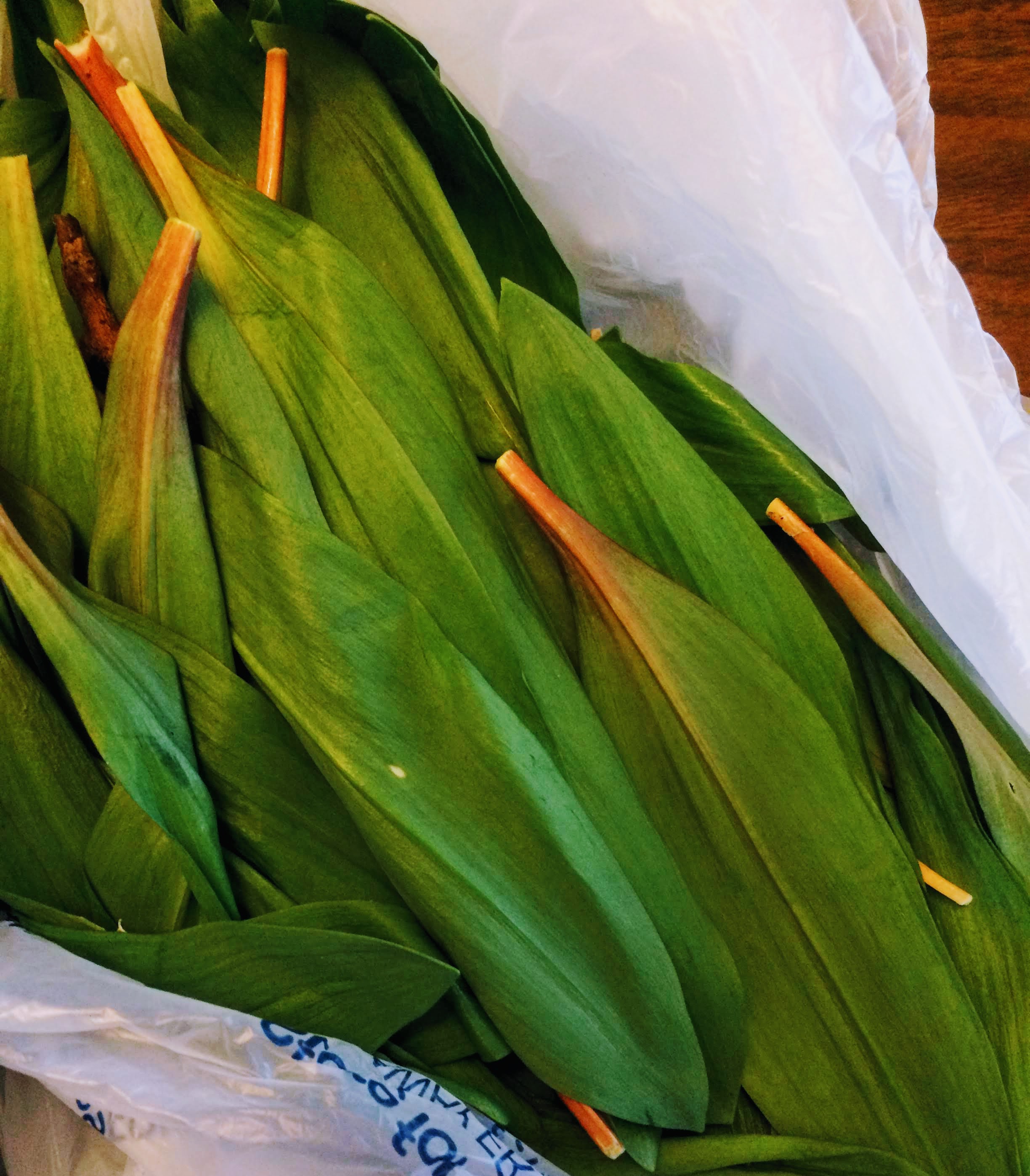
These wild onions are only around for a brief period and we love them as much as so many other folks do. In some areas they are sparse and protected since they are so slow to grow and so often over-harvested, but we have nearby patches that are extensive and flourishing. We harvest sustainably and only take the leaves (generally one from each plant), leaving the bulbs.
Favorite ways to use ramps:
- Dried, then mixed in ramp seasoning salt with other herbs and sea salt.
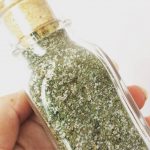
- Dried, kept in a jar on the top of the stove for seasoning soups and such.
- Dried in ramp dip and ramp salad dressing (similar in taste to ranch).
- Chopped fresh in ramp butter.
- In creamy soups.
- In omelets and frittatas.
- In homemade pasta
Here’s ramp pasta that Fiona helped to make a few years ago, ready to drop into the boiling water. We make it gluten free but you can use any pasta recipe. I blanch it and puree it, then add it to the dough.
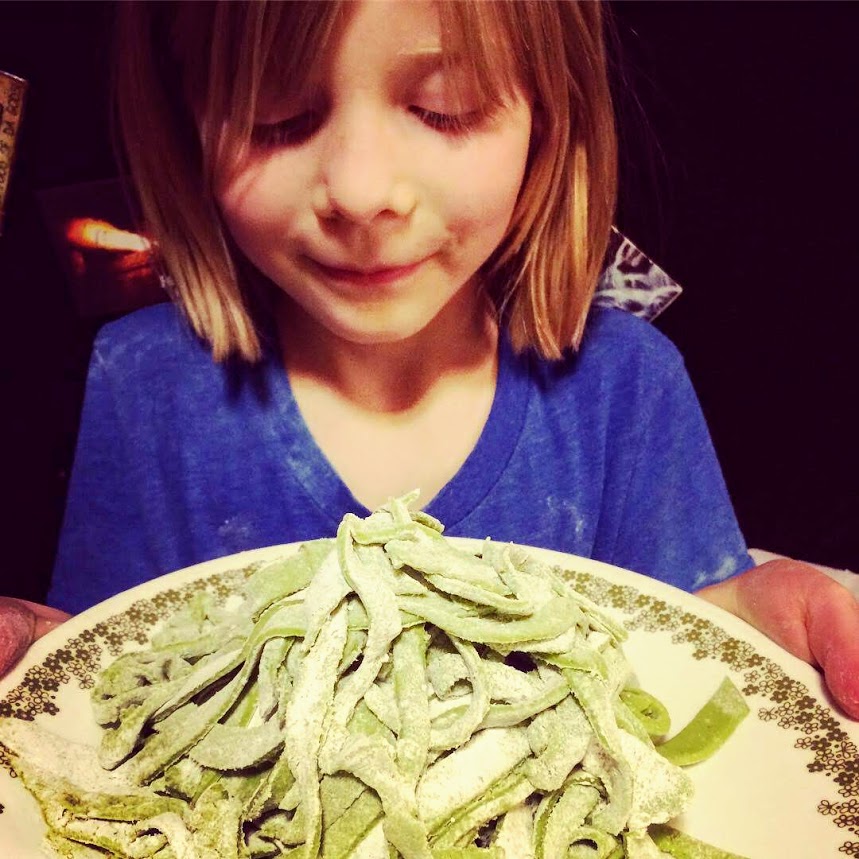
Cattails
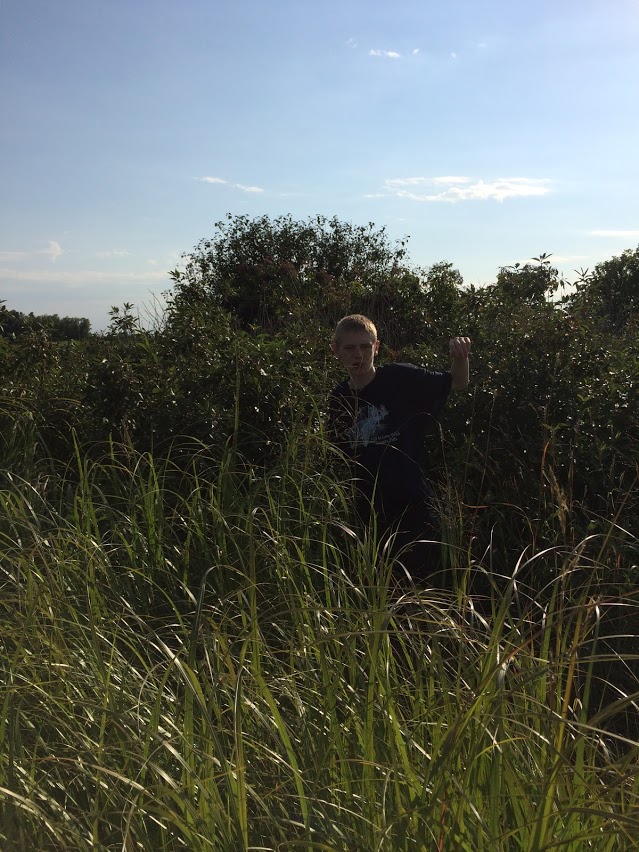
You can use various parts of cattails year-round, but the tender bottom shoots in early spring are some of our favorites. We enlist the boys in pulling them out of the muck and then clean them right there, bringing home the bottoms and stripping the outer layers off. I prefer to cook them in a little water and then braise them in butter. They’re delicious, with a flavor similar to a cross between celery and green beans perhaps? But much better.
Here’s a pic of some buttered cattail shoots with milkweed blossoms from a few years ago.
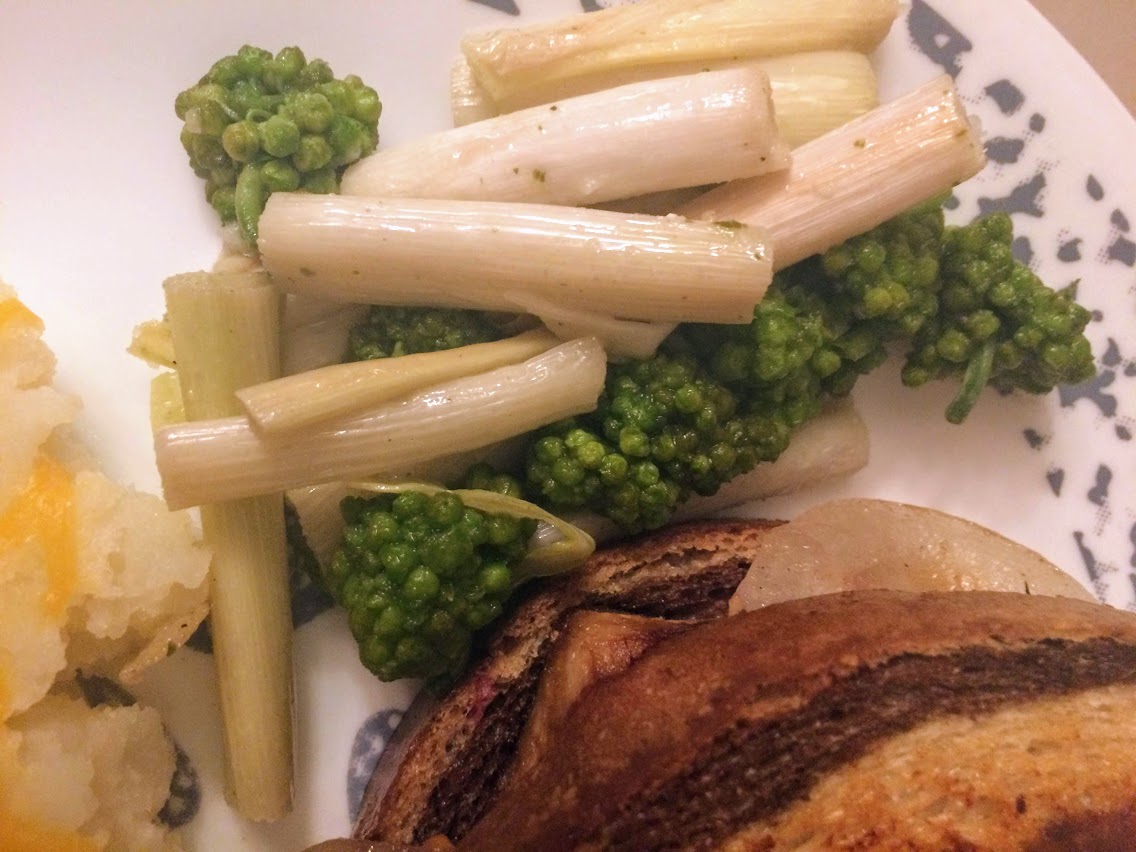
The kids absolutely love the fun of foraging cattails, too.
Nettles
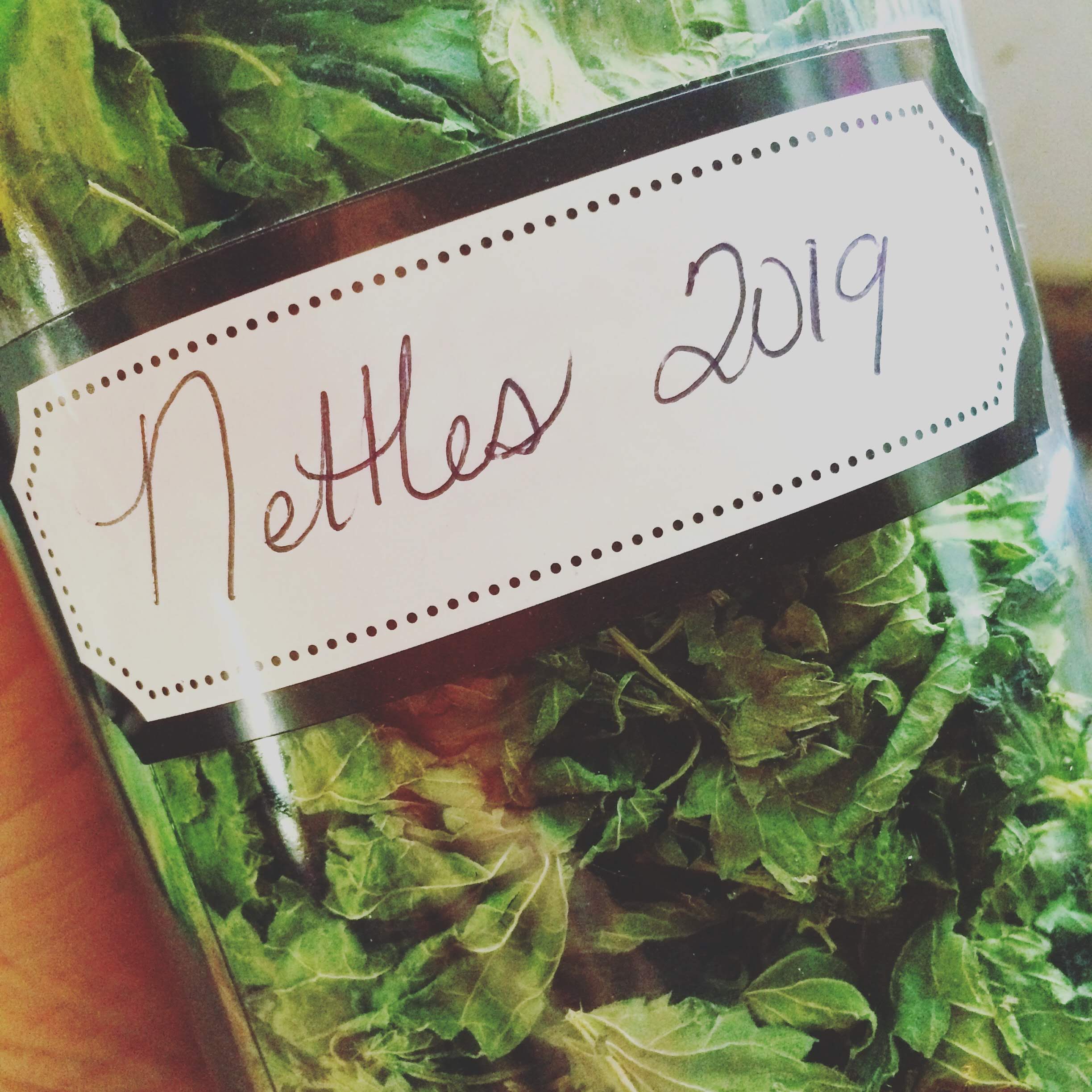
Nettles are a favorite not just for eating, but for nourishing us and beating illnesses. Daryl foraged fresh nettles for me all spring of 2020 when I was very sick with C-19. We had no access to medical care back then since we were told we could not to go to the doctor or the hospital unless our lips turned blue or we couldn’t breathe at all, and it was impossible to buy anything helpful or medicinal in those early days (even a thermometer took weeks to order online!). Having a stockpile of homemade remedies and access to foraged herbs made a huge difference in my healing even though I was very ill.
But also, they taste great! We use them anywhere you’d use spinach — in casseroles, soups, even smoothies.
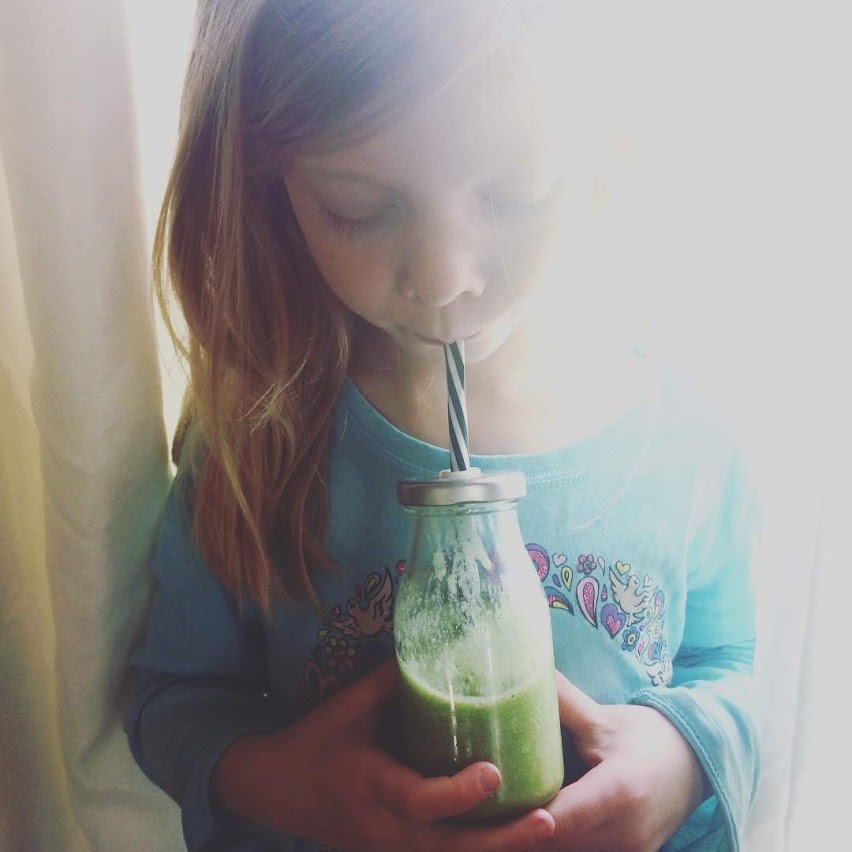
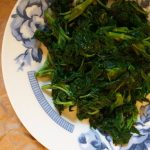
Obviously, avoid the stings of fresh nettles. Harvest with gloves or use scissors to drop them right into your foraging basket. Take the fresh, green tops. Once boiled or dried, they lose their sting (though a tiny bit of sting can persist when dried for me, so be careful when crumbling by hand into dishes).
They are loaded with iron, calcium and tons of vitamins and minerals. They taste fresh and mild.
For medicinal purposes, make an infusion by simmering in water over a longer period like 20 minutes and then straining. You can also make a simple tea for everyday health benefits.
Other Early Spring Wild Foods to Forage
These are some of our favorites, but there are plenty of others out there. Garlic mustard is always plentiful and it’s not a favorite taste but you’re helping the environment when you harvest it since it’s very invasive. We use it in small amounts in things like stir fries.
Lambsquarters are also great, though I forage them more in summer when other greens are getting bitter and they tend to pop up in my gardens anyway. I find it so funny that most gardeners pull these volunteer greens that actually taste better than the planted greens like spinach and lettuce once summer heat hits!
Dandelion leaves are healthy and ubiquitous, though they’re not a favorite. I nibble them when I’m outside as a sort of wild multivitamin. 🙂
Virginia waterleaf is also common in early spring but I’m not a fan of the taste. I consider it more of a survival food and there are so many delicious wild foods that I don’t mess with the less tasty ones.
Those are just a drop in the bucket, of course!
Later Spring
Later in the spring, we’ll have more wild foods that we’ll forage, like dandelion flowers, violets, garlic mustard, pheasant back mushrooms, morels, spruce tips and wild asparagus. I’ll post that list soon!
What are your favorite wild spring foods to forage? Any that you’re looking forward to trying?



